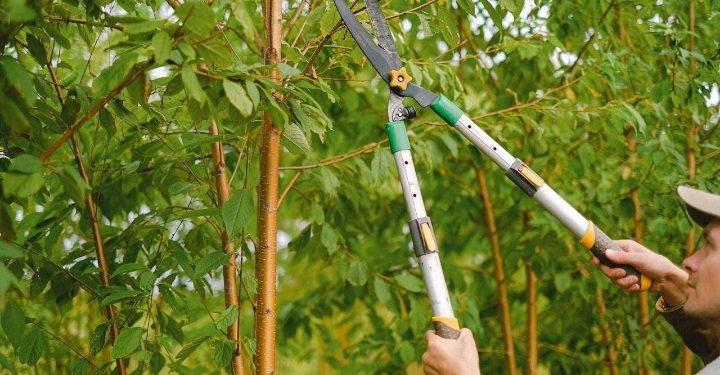Trees contribute more than just visual appeal; they provide shade and privacy to your property. Importantly, they offer a multitude of benefits, impacting individuals and the environment positively. Planting trees extends beyond property enhancement; it signifies a commitment to creating a private and eco-friendly sanctuary. In an era dominated by technology and diminishing green spaces, trees act as potent shields against harmful emissions. They are not mere aesthetics; they function as nature’s superheroes, elevating your property value, purifying the air, and combating climate change. Recognizing their multifaceted contributions, especially in Toronto, is important.
Now, let’s look into ten valuable tips to maintain your privacy while planting and caring for trees in your backyard. These privacy-boosting strategies will guide you through the process, ensuring benefits like shade, energy conservation, and increased property value.
1. Choose Trees with Purpose. When picking trees for your yard, think about what you want, like shade, privacy, or a more valuable property. Ask advice from a Newmarket Arborist for personalized help. Trees aren’t all the same; each type has a different job. Picking the right one makes sure your yard looks how you want. An Arborist knows a lot and can guide you, considering how fast trees grow, what care they need, and the local weather. This helps you choose the best tree for your yard.
2. Plant for Energy Conservation. Achieving energy efficiency with trees for sale in Oakville, Enhance your home’s energy conservation by planting deciduous trees with large crowns strategically on the south side. These trees provide valuable shade for windows and the roof, helping to reduce energy consumption. For effective late-afternoon sunblock on the west side, opt for deciduous trees with lower crowns. Additionally, consider planting small evergreen trees on the west and north sides to act as efficient windbreakers during the winter season, further contributing to a well-regulated and energy-efficient environment.
3. Dig and Prepare the Hole Carefully. Prioritize safety by contacting your utility company to mark underground lines before digging. Excavate an area three times the diameter of the tree’s root ball, ensuring proper depth based on soil type. Add aged manure or compost to the excavated soil for a nutrient-rich backfill.
4. Plant at the Proper Time. Optimal tree planting occurs in cool, cloudy, and humid fall weather. If you can’t plant immediately, store the tree in a cool, shaded spot, keeping the roots moist. Soak bare roots in water the night before planting.
5. Set Up the Tree for Success. Before planting, remove containers, burlap, and any ties around the trunk. Ensure the roots are “teased out” while keeping the root ball intact.
6. Avoid Planting Large Trees in Small Areas. Consider the mature size of the tree to prevent future issues with buildings or utility lines. Research the growth patterns of the chosen tree to avoid complications.
7. Avoid Over-Fertilizing. Refrain from putting fertilizer directly into the planting hole to prevent root damage. Wait until spring and lightly fertilize young trees.
8. Don’t Trample the Soil After Planting. After placing most of the backfill, water the tree gently to settle the soil. Avoid trampling, as it may cause the soil to settle below grade.
9.Water Properly. Ensure a well-soaked area immediately after planting, but afterward, water infrequently and deeply. Overwatering can drown the roots, while light, frequent watering encourages shallow root growth. Continue watering through fall and winter during dry periods to prevent drought damage.
10. Navigating Spring Tree Care: Addressing Potential Rat Infestations. As spring arrives and the weather warms up, certain tree pests, such as rats, may become more active. It’s important to note that rats are ground-dwelling rodents that typically construct burrows in various environments. In urban areas like Toronto, rats are commonly found in sewers, buildings, and other structures where they seek shelter and access to food sources. While rats may occasionally climb trees, particularly if there’s a nearby food source, they do not primarily inhabit trees.
To ensure the health of your trees and prevent potential issues, it’s important to incorporate tree pest control into your tree care program. Early spring is an ideal time to inspect all your trees for signs of insects and take necessary actions to address tree pests before the upcoming growing season. If you suspect a rat infestation, prompt intervention through rat control in Toronto is essential to mitigate potential risks.
In Conclusion,Creating a private oasis in your Toronto backyard involves thoughtful tree selection and proper care. By adhering to this tips you’ll not only enhance your privacy but also contribute to the beauty and sustainability of your outdoor space.











































































